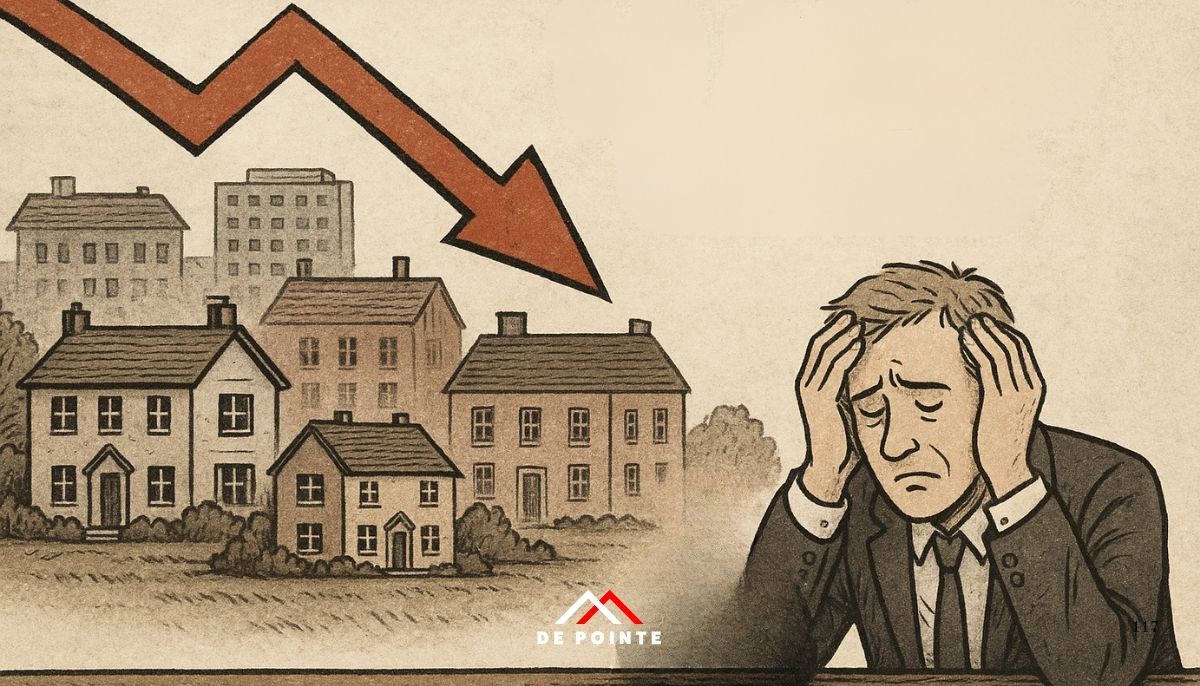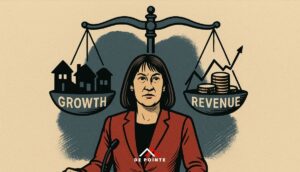Article

In July 2025, the UK property market was rocked by the steepest one-month fall in average asking prices in over two decades. According to Rightmove, average the UK house price fell by 1.2% in a single month, equivalent to a £4,531 drop, bringing the national average down to £373,739. This is the sharpest July decline since the Rightmove index was established in 2001.
While annual prices are technically still 0.1% higher than in July 2024, the dramatic monthly contraction paints a clear picture: the UK housing market is under growing pressure, and the traditional summer slowdown has evolved into a significant market correction.
So what’s driving this sudden reversal? What does it mean for property investors? And where are real estate investors now looking?
What’s Behind the Drop?
1. Stamp Duty Reform Backlash
The rollback of pandemic-era stamp duty incentives in April 2025 has had a significant impact on the market. The tax burden for buyers has increased significantly, particularly in higher-priced areas such as London. This policy change was expected to cool demand, but the rapid pace and scale of the market’s adjustment have surprised many.
2. Record Levels of Supply
Property listings surged in Q2 and Q3 2025, reaching their highest levels in over 10 years. Sellers have become increasingly eager to cash in before any potential rate cuts or further economic uncertainty. But with buyer demand still muted, prices are being slashed to remain competitive in a crowded market.
3. Seasonal Slowdown… on Steroids
July typically sees slower market activity as buyers and sellers take summer breaks. But this year’s seasonal dip has been far more dramatic, exacerbated by macroeconomic uncertainty, affordability pressures, and political caution ahead of potential policy changes on housing.
4. Affordability Pressures Remain
Although average mortgage rates have fallen slightly, two-year fixes dropped from around 5.3% to 4.5%. Many buyers are still struggling to finance purchases due to high living costs and lingering wage inflation. Despite some relief in rates and real wages rising by around 5% year-on-year, affordability remains a challenge.
5. Falling Confidence
Consumer confidence in the housing market has taken a hit. With many fearing further price corrections and tighter lending criteria, some buyers are choosing to wait, hoping for better deals later in the year.
Implications for Real Estate Investors
Short-Term: Uncertainty, but Opportunity
For seasoned investors, the current correction offers an entry point. Falling prices, especially in oversaturated or expensive markets, present opportunities for value-based acquisitions. However, for those expecting rapid capital growth, the outlook may disappoint.
Rightmove has revised its full-year house price forecast from +4% to just +2% for 2025, suggesting more subdued growth than initially expected.
London in Trouble
Inner London saw prices fall by 2.1% in July alone. In the luxury market, postcodes such as W1 and SW3 have seen annual declines of up to 60% from their peak valuations. This segment has become increasingly volatile and illiquid, with tax hikes on second homes and prime property weighing on demand.
Investors heavily exposed to high-end London property should consider rebalancing. For those with liquidity, distressed assets may become available at below-market value, but this carries risk and requires a medium-to-long-term view.
Yield Over Capital Gains
In the current environment, rental yields are increasingly becoming the central reason to hold residential property. Average UK rents have risen 6.7% year-on-year to £1,344 per month. With tenant demand strong and many buyers now opting to rent instead, landlords are seeing stable (and in some cases growing) income.
Investors are now looking closely at:
- Buy-to-let in regional cities like Manchester, Birmingham, and Leeds
- Purpose-built rental accommodation
- Student housing and HMO properties
- Affordable housing developments backed by government schemes
Where Are Investors Looking Instead?
1. Northern Regions and Midlands
Unlike London, some northern regions have continued to see modest month-on-month price growth. Areas like the North East and East Midlands are benefitting from lower average prices, higher yields, and stronger relative demand.
2. Rental-Focused Strategies
With capital appreciation less certain, many investors are pivoting toward income strategies:
- Build-to-rent developments
- Multi-let/HMO properties
- Long-term rental portfolios in commuter belts
These approaches capitalise on sustained tenant demand, rising rents, and lower sensitivity to short-term price fluctuations.
3. Diversified Real Estate Funds
Rather than concentrating risk in one postcode or property type, institutional and HNW investors are increasingly turning to diversified real estate investment trusts (REITs) or private real estate funds with exposure to multiple markets, including logistics, commercial, and residential rental stock.
4. International Alternatives
With the UK market entering a period of softness, some investors are also looking abroad. Countries with stronger GDP growth, looser monetary policy, or more favourable housing regulations, such as Portugal, Poland, and select parts of the US, are receiving renewed attention.
5. Alternative Tangible Assets
In light of the hardships that the UK real estate market is experiencing, many UK property investors are seeking alternative tangible assets that offer many of the benefits of real estate without the burdens often associated with property ownership. Assets such as gold, art, and fine wine typically offer investors greater capital returns than real estate, with less maintenance required.
What Happens Next?
Market watchers are now closely monitoring the Bank of England. With inflation slowly falling but still above target, two base rate cuts are possible before the end of 2025. If and when they occur, this could provide a new tailwind for property prices, though the effect is likely to be gradual rather than explosive.
Until then, property investors must proceed with caution. Prices may yet fall further, particularly if the glut of listings persists. But for yield-oriented investors with a regional or rental focus, conditions remain attractive.
For over two decades, the UK real estate market has been regarded as a reliable store of wealth. July’s record one-month price drop reminds us that even “safe” markets can correct sharply in times of transition. Investors would do well to revisit their assumptions, especially around capital growth, and instead focus on sustainable yield, diversified exposure, and regions with resilient fundamentals.
This is not a time to retreat from real estate, but it is a time to re-strategise.





